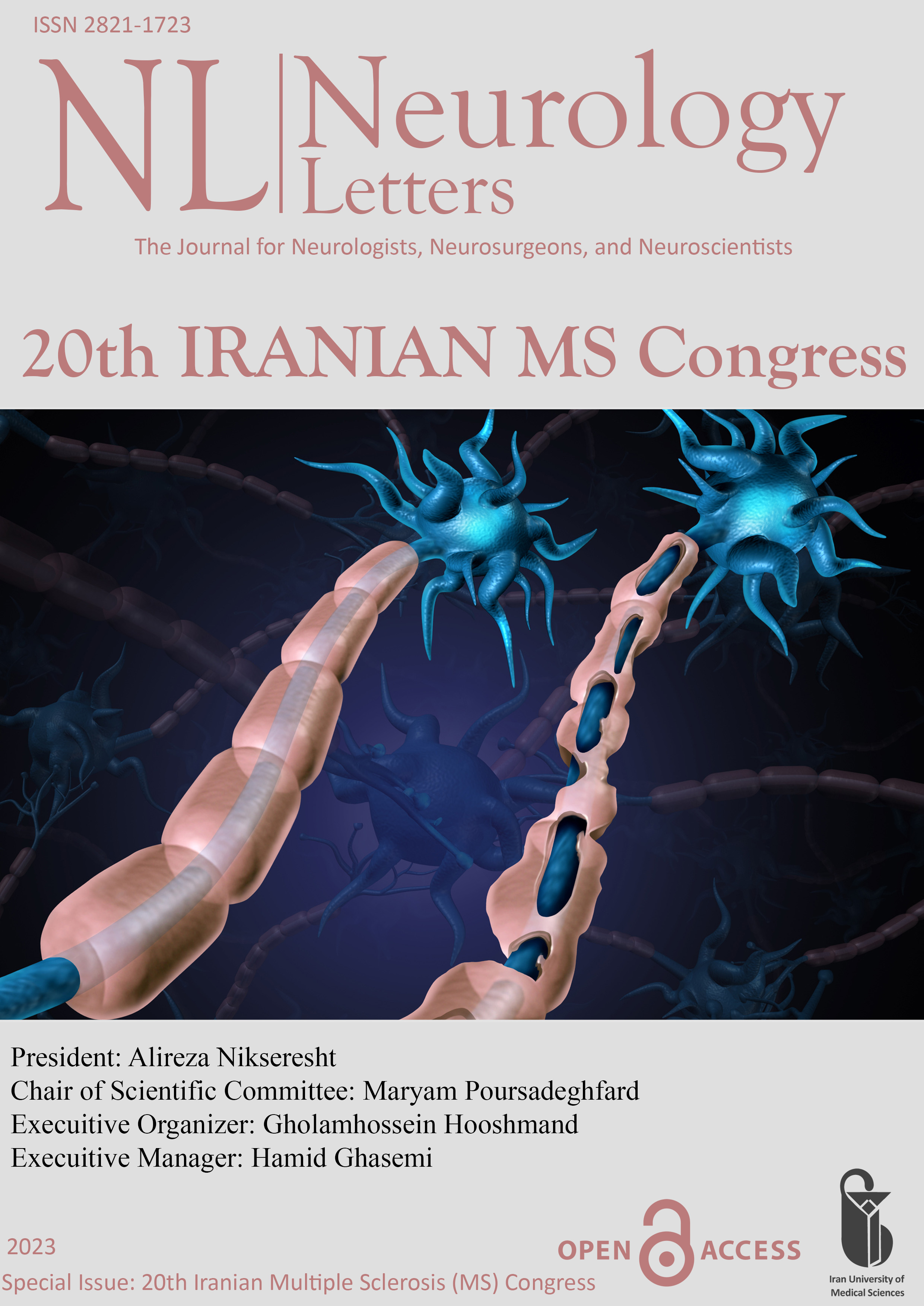Comparison of COVID-19 infection, Acute Relapse, and Adverse Effects Following COVID-19 Vaccination Between Patients with Multiple Sclerosis and Other Neurological Disorders (PP-29)
Authors
- Mohammad Yazdan Panah 1
- Saeed Vaheb 1
- Yousef Mokary 1
- Elham Moases Ghaffary 1
- Alireza Afshari-Safavi 2
- Aysa Shaygannejad 1
- Narges Ebrahimi 1
- Vahid Shaygannejad 3
- Omid Mirmosayyeb 1
1 Isfahan Neurosciences Research Center, Isfahan University of Medical Sciences, Isfahan, Iran
2 Department of Biostatistics and Epidemiology, Faculty of Health, North Khorasan University of Medical Sciences, Bojnurd, Iran
3 1. Isfahan Neurosciences Research Center, Isfahan University of Medical Sciences, Isfahan, Iran 2. Department of Neurology, School of Medicine, Isfahan University of Medical Sciences, Isfahan, Iran
Abstract
Background: Patients with neurological disorders have been vaccinated in response to the global COVID-19 pandemic. This study aimed to determine the factors contributing to COVID-19 infection and acute relapse and compare adverse effects following COVID-19 vaccination among patients with multiple sclerosis (pwMS) and other neurological disorders (OND).
Method: This prospective observational study was conducted between September 2021 and September 2022 in Isfahan, Iran, to collect demographic and clinical data on pwMS and OND patients, COVID-19 infection, vaccination, and adverse effects. Headache, migraine, low back pain, epilepsy, myasthenia gravis, Parkinson's disease, stroke, Alzheimer's disease, motor neuropathy, myopathy, major depressive disorder, obsessive-compulsive disorder, and brain tumor were considered OND. Logistic and Poisson regression were used to investigate the relationship between clinical indicators and COVID-19 infection and acute disease relapse after COVID-19 vaccination.
Results: This study included 1306 participants, 818 of whom had MS and 488 had OND. Among pwMS, age (OR=1.030, 95%CI: 1.007–1.054, p=0.012), exacerbated neurological symptoms after COVID-19 infection (OR=1.920, 95%CI: 1.028–3.586, p=0.029) were associated with the higher risk of COVID-19 infection after vaccination, and the presence of adverse effects following the second dose of the vaccine compared to no adverse effects after second dose (OR=0.576, 95%CI: 0.374–0.887, p=0.012) was correlated with the lower risk. While OND patients with inactivated vaccine compared to vector-based vaccine (RR=0.424, 95%CI: 0.188–0.958, p=0.009) were at a lower risk of COVID-19 infection after vaccination. The risk of acute disease relapse following COVID-19 vaccination in pwMS and OND patients was not significantly influenced by demographic and clinical characteristics.
Conclusion: The risk of COVID-19 infection after COVID-19 vaccination in pwMS was associated with some demographic characteristics and COVID-19-related data, while OND patients did not exhibit these relationships. Consequently, these factors should be considered after COVID-19 vaccination in pwMS.
Keywords
 Neurology Letters
Neurology Letters
